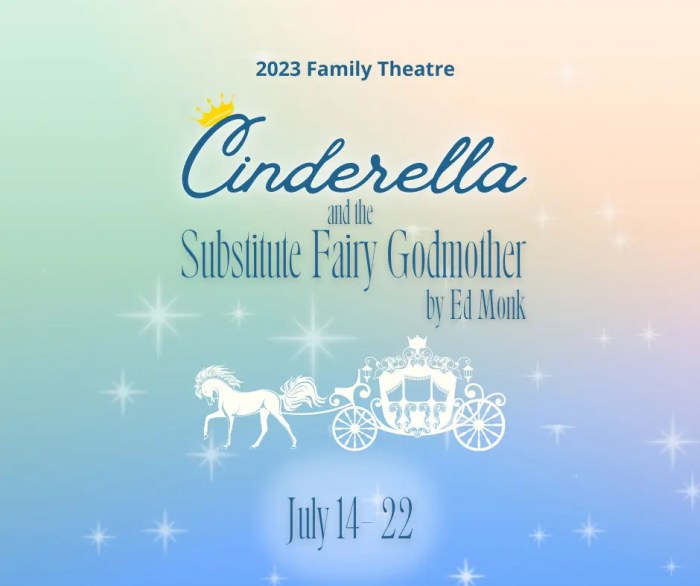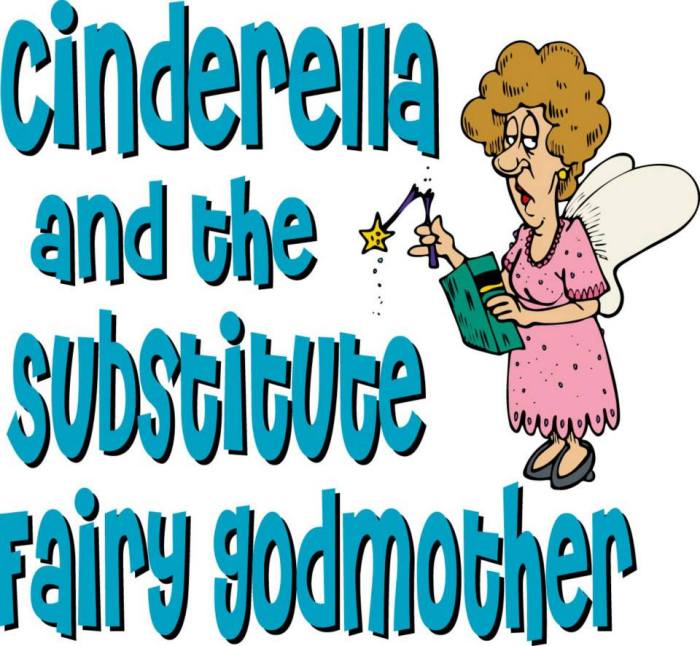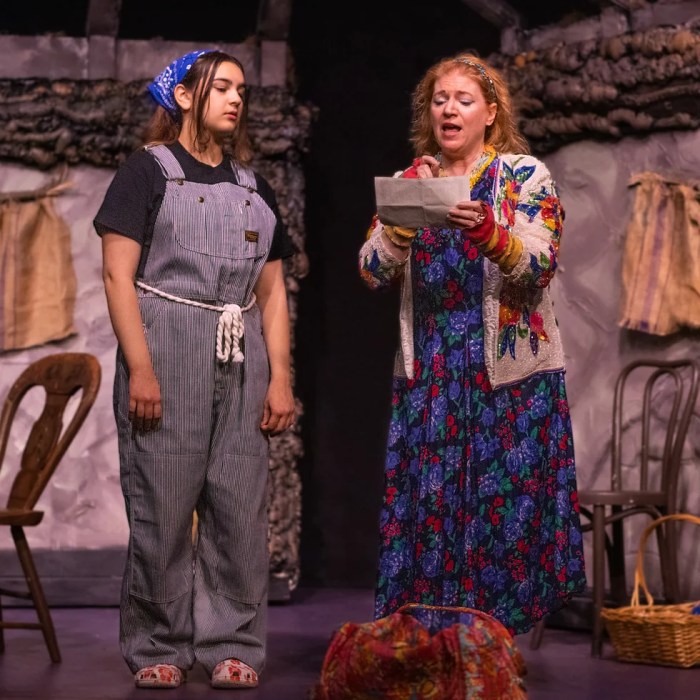In a captivating retelling of the classic fairy tale, “Cinderella and the Substitute Fairy Godmother” introduces a fresh twist that challenges traditional roles and transforms the beloved story in unexpected ways. This engaging narrative explores the impact of a substitute fairy godmother on Cinderella’s transformation, the prince’s perspective, and the story’s thematic implications.
As the story unfolds, the substitute fairy godmother’s involvement alters Cinderella’s transformation, influencing the prince’s perception of her and ultimately reshaping the story’s romantic subplot. Through a meticulous analysis of these changes, this discussion sheds light on the broader implications for the story’s message and the enduring themes of hope, resilience, and the transformative power of belief.
The Fairy Godmother’s Role

The fairy godmother in the traditional Cinderella story plays a crucial role in enabling Cinderella’s transformation and ultimately her happy ending. She provides Cinderella with the necessary tools, such as the glass slipper, ball gown, and carriage, to attend the prince’s ball.
However, in the story “Cinderella and the Substitute Fairy Godmother,” the role of the fairy godmother is significantly altered.
The substitute fairy godmother in this story differs from the traditional role in several ways. Firstly, she is not a magical being but rather a wise and compassionate old woman who acts as a mentor and guide to Cinderella. She provides Cinderella with practical advice and support rather than magical gifts.
Secondly, the substitute fairy godmother’s focus is on empowering Cinderella to believe in herself and her own abilities, rather than relying on external forces.
The substitute fairy godmother’s actions impact the story in various ways. By emphasizing self-reliance and inner strength, she encourages Cinderella to take ownership of her life and pursue her dreams. This shift in focus also highlights the importance of personal growth and self-discovery, making Cinderella’s transformation more meaningful and lasting.
Cinderella’s Transformation
In the original Cinderella story, Cinderella’s transformation is primarily physical. The fairy godmother’s magic grants her a stunning ball gown, glass slippers, and a carriage, allowing her to attend the ball and attract the prince’s attention. However, in “Cinderella and the Substitute Fairy Godmother,” Cinderella’s transformation is more subtle and multifaceted.
The substitute fairy godmother’s involvement changes Cinderella’s transformation by focusing on her inner qualities. She encourages Cinderella to embrace her kindness, courage, and intelligence. This inner transformation manifests itself in Cinderella’s newfound confidence and self-assurance. As a result, she attends the ball not to impress the prince but to experience the event for herself.
These changes in Cinderella’s transformation are significant because they emphasize the importance of personal growth and self-acceptance. They demonstrate that true beauty and worthiness come from within, not from external factors or superficial appearances.
The Prince’s Perspective

In the traditional Cinderella story, the prince is initially attracted to Cinderella’s physical beauty and charm. However, in “Cinderella and the Substitute Fairy Godmother,” the substitute fairy godmother’s presence influences the prince’s perception of Cinderella in several ways.
Firstly, the prince notices Cinderella’s kindness and compassion towards others, which makes her stand out from the other guests at the ball. Secondly, he is impressed by her intelligence and wit, which she demonstrates in their conversations. These qualities lead the prince to see Cinderella as a genuine and worthy individual, beyond her physical appearance.
These changes in the prince’s perspective impact the story’s romantic subplot by creating a more nuanced and realistic relationship. The prince’s attraction to Cinderella is based on her true self, not on a superficial transformation or magical enchantment.
The Glass Slipper: Cinderella And The Substitute Fairy Godmother

In the original Cinderella story, the glass slipper serves as a key plot device that ultimately leads to Cinderella’s identification and marriage to the prince. However, in “Cinderella and the Substitute Fairy Godmother,” the significance of the glass slipper is altered.
The substitute fairy godmother does not provide Cinderella with a glass slipper. Instead, Cinderella leaves behind a simple, wooden shoe at the ball. This change highlights the emphasis on inner qualities rather than external appearances. The prince, guided by the substitute fairy godmother’s wisdom, realizes that the true Cinderella is not the one with the matching shoe, but the one who possesses the kindness, intelligence, and self-confidence that he witnessed at the ball.
These changes in the role of the glass slipper imply that true identity and worthiness cannot be determined by superficial means. They reinforce the story’s message that it is the inner self that truly matters.
Thematic Implications

The original Cinderella story conveys several key themes, including the importance of kindness, perseverance, and the triumph of good over evil. However, in “Cinderella and the Substitute Fairy Godmother,” the role of the substitute fairy godmother affects these themes in several ways.
The substitute fairy godmother’s emphasis on self-reliance and inner strength reinforces the theme of personal growth and self-discovery. By empowering Cinderella to believe in herself, the substitute fairy godmother highlights the importance of inner transformation over external appearances.
Additionally, the substitute fairy godmother’s role challenges the traditional notion of a “fairy godmother” as a magical being who solves all problems. Instead, she presents a more realistic and relatable mentor who provides guidance and support, empowering individuals to overcome challenges on their own.
These changes in the thematic implications of the story emphasize the importance of self-empowerment, personal responsibility, and the enduring power of kindness and compassion.
Commonly Asked Questions
How does the substitute fairy godmother differ from the traditional fairy godmother?
Unlike the traditional fairy godmother who grants Cinderella’s wishes with a wave of a magic wand, the substitute fairy godmother provides guidance and empowerment, encouraging Cinderella to believe in her own abilities.
How does the prince’s perception of Cinderella change with the substitute fairy godmother’s involvement?
The substitute fairy godmother’s presence shifts the prince’s focus from Cinderella’s outward appearance to her inner qualities, leading him to appreciate her kindness, intelligence, and determination.
What are the key thematic implications of the substitute fairy godmother’s role?
The substitute fairy godmother reinforces the themes of self-reliance, personal growth, and the importance of believing in oneself, challenging the traditional notion of waiting for a magical solution to life’s challenges.